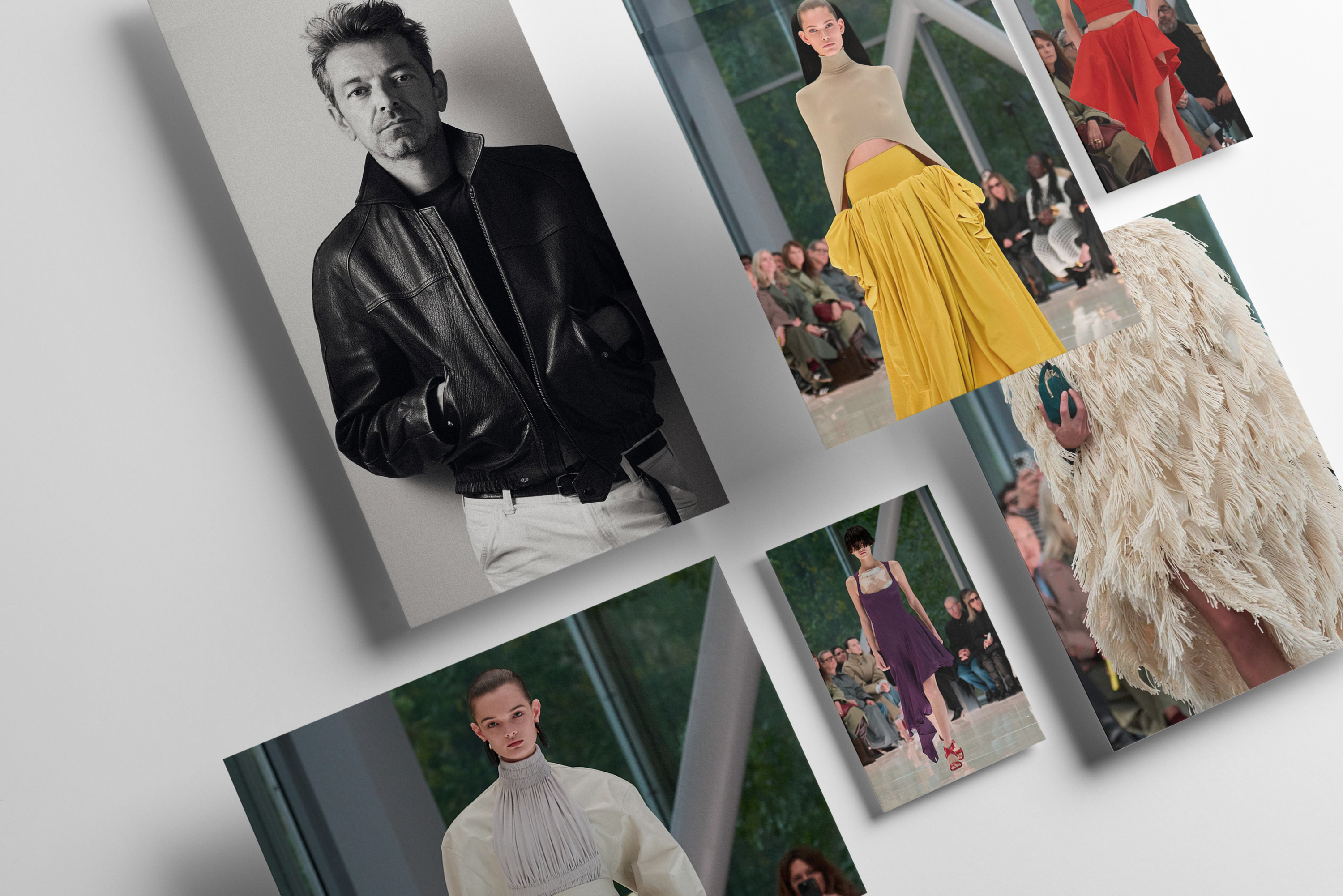With A Mirrored Ceiling Above And A Digital Floor Below, The Alaïa Creative Director Reveals A Collection Of Tension, Release, And Romantic Beauty — With Raf Simons And Fashion’s Inner Circle Looking On
By Kenneth Richard
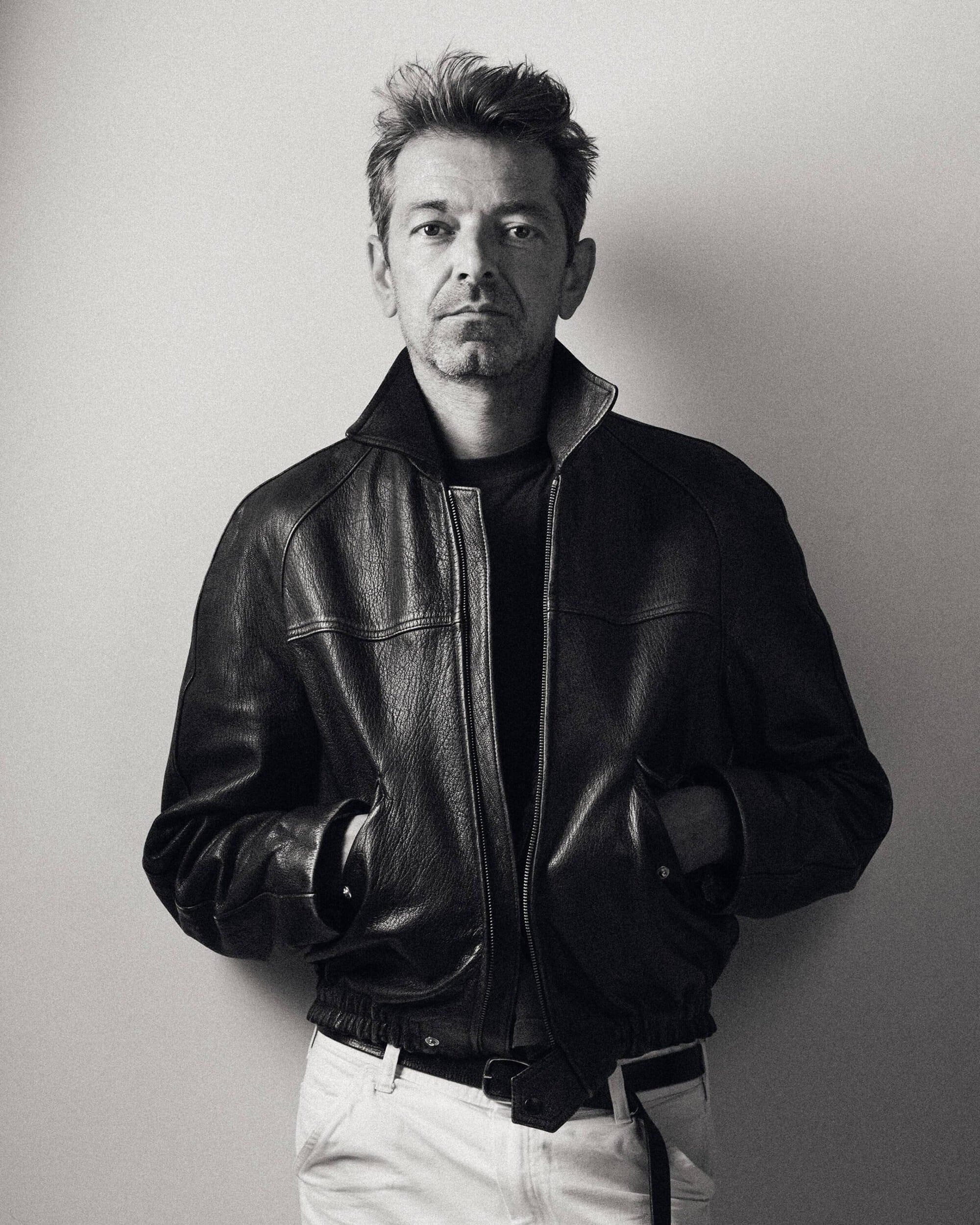
The room was transformed into a living metaphor. Beneath the Alaïa guests, a digital floor rippled with cinematic imagery; above, a mirrored ceiling cast back every movement. As models walked between reflection and projection, Pieter Mulier asked fashion to look at itself — to consider beauty as both a surface and a truth, a mirror and a window.
The audience was a who’s who of the industry’s cultural arbiters. Ronnie Cooke Newhouse, Fabien Baron, Ezra Petronio, Lana Petrusevych, Inez and Vinoodh, Alex de Betak — each a visual architect in their own right — sat front row. And when Raf Simons, Mulier’s mentor and longtime collaborator, slipped backstage mid-interview to embrace him, the gesture underscored the designer’s place within this rarefied circle: not just Raf’s protégé, but his peer.
Mulier arrived for our conversation in his familiar uniform: a white T-shirt, jeans, salt-and-pepper hair slicked back. His presence mixed energy with gravity. There was a lightness in his movements, but his eyes carried something weightier — a soulful, weathered contemplation. He spoke quietly at first, building momentum until his words mirrored the collection itself: restrained, then urgent, then fully alive.
In the circus of fashion we live in, I thought it was good to put the girls and the beauty in the center. The clothes are simple, stripped of influence. It’s not about TikTok or Instagram noise. I wanted clothes that cry.
By that, he meant clothes that hold emotion — garments that acknowledge the heaviness of the world while still offering beauty and hope.
If you look at the news, what I feel today… it can seem like fashion is not necessary. So I said to the team, let’s make pieces that carry feeling — tension and release, pulling and loosening. Not drama, but emotion. Because there needs to be hope.
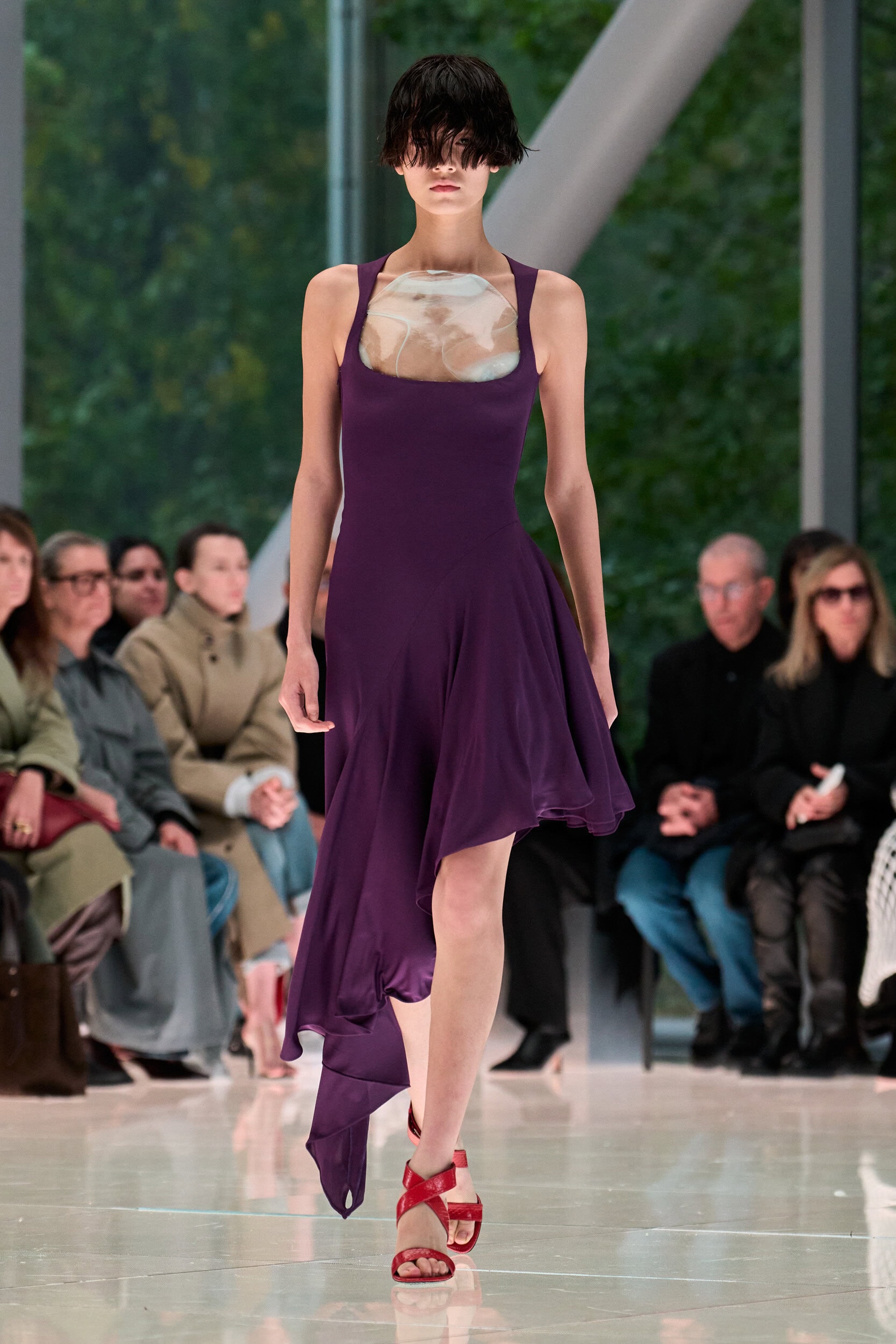
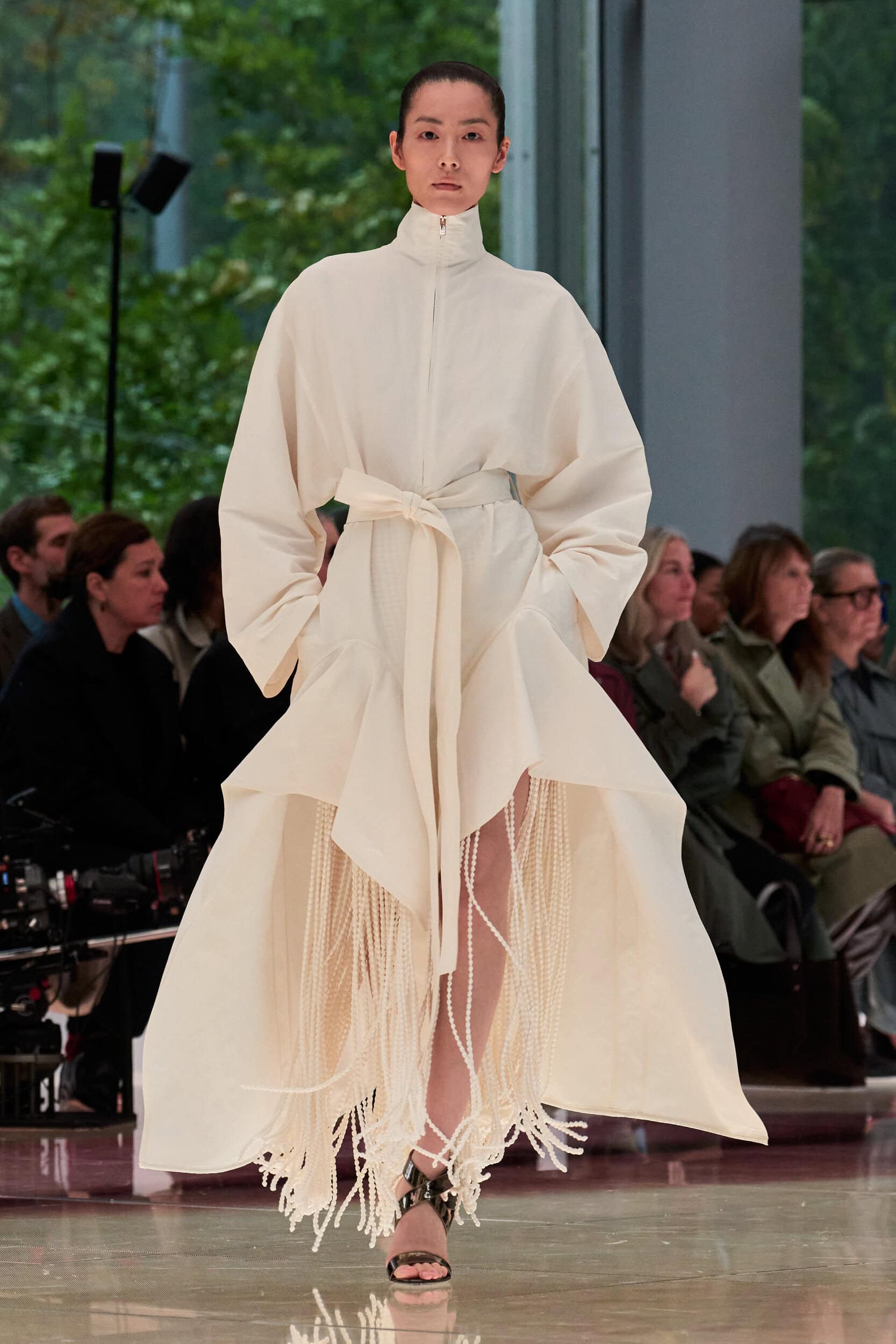
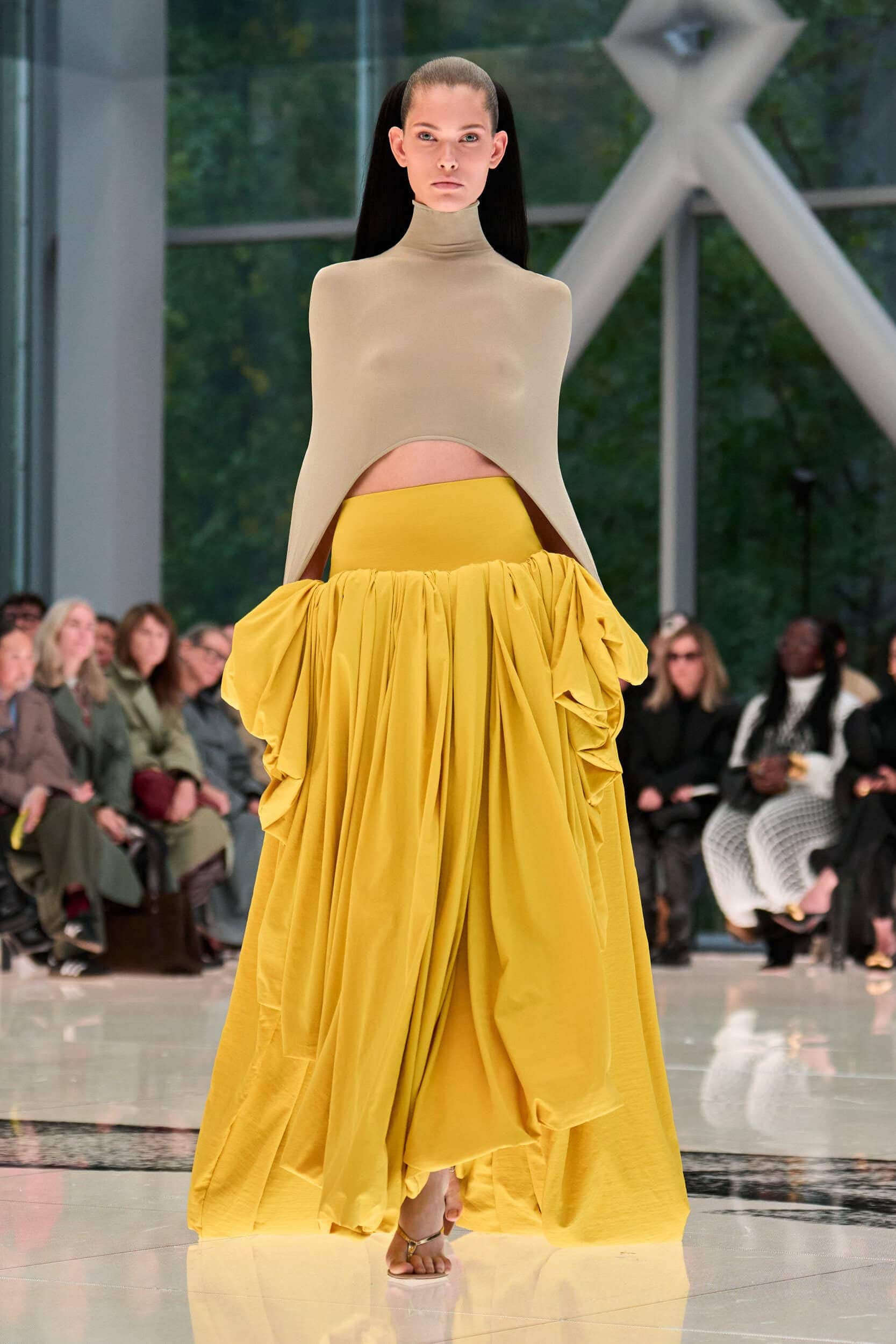
Knits were stretched taut then let go, trousers tugged and softened, fringes hung like tears from the neck. The clothes became both vulnerable and resilient, reflections of the contradictions of our moment.
The gowns closed the show with a ceremonial gravity. Cut from archival patterns, they swelled like balloons filled with air, grand but never theatrical, intimate in their scale. “I told them, make ball gowns — but make them sex,” Mulier laughed. “I wanted dream, but I wanted women you could see, women you could believe.”
Music heightened the tension. Longtime collaborator Gustav Rudman scored the show with cello and harp layered against new techno beats. Masculine and feminine, beauty and disruption — the score built and released like the collection itself.
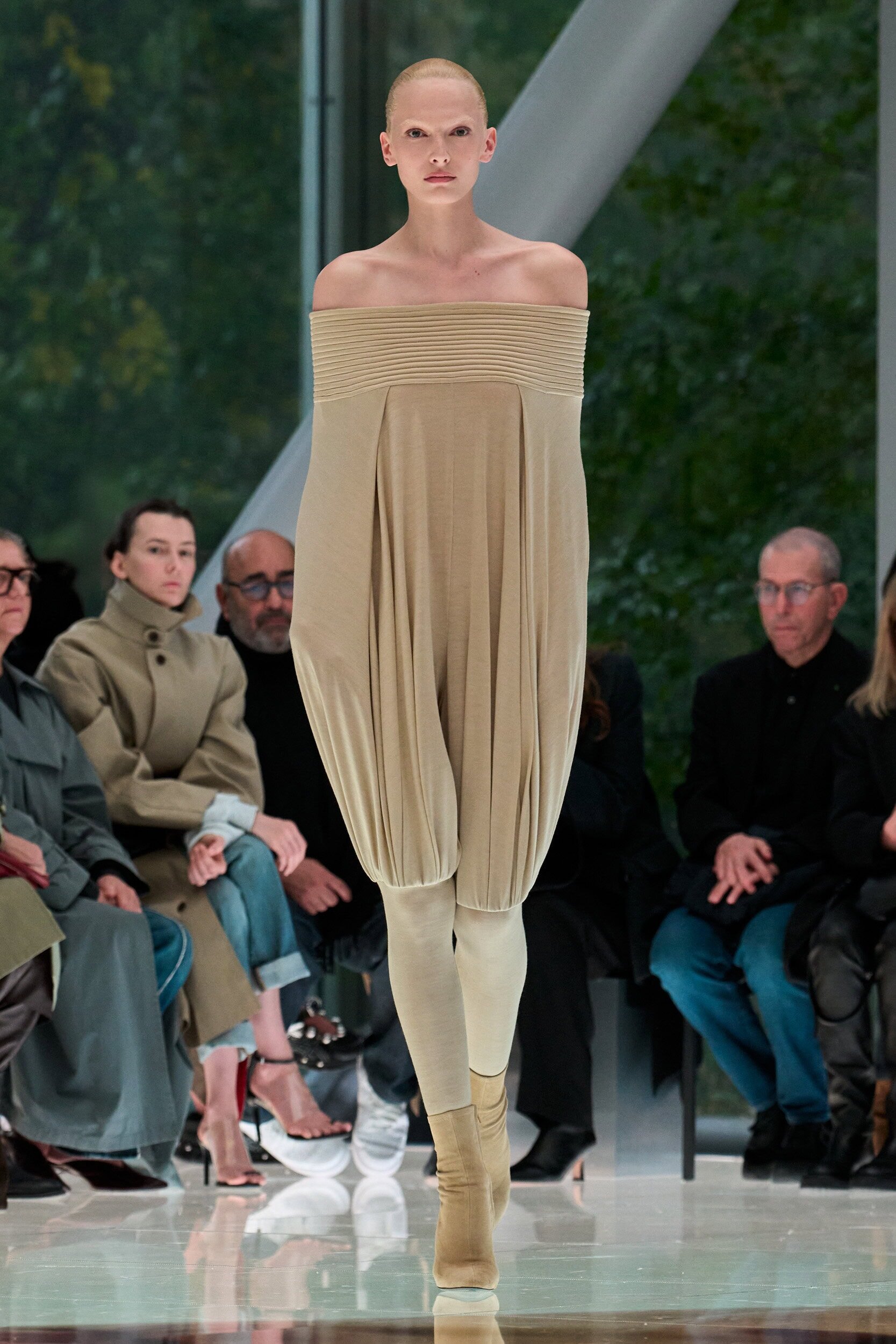
It’s not about necessity. In the world we live in today, fashion can feel unnecessary. But maybe clothes that cry, mixed with pure beauty, can say something new. I wanted to create a cocoon for you — to feel something outside of Instagram, outside the news. Just for a moment.
That moment felt amplified in the mirror above, where audience, models, and clothes collapsed into a single reflection. A metaphor, yes, but also a reminder: designers don’t just create clothes. They hold up mirrors — to beauty, to culture, to the contradictions of our time.
And in this reflection, Pieter Mulier was not only carrying forward Alaïa’s legacy of body and craft, but also offering fashion what it most needs now: beauty as antidote, and a reason to keep looking.
